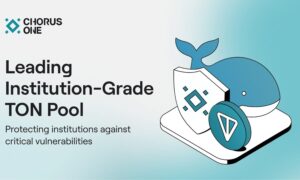As blockchain technology has matured, ICOs have emerged as an attractive, alternative means for startups to raise funding. However, while more than $5 billion was raised in ICO projects in 2017 alone, a number of high profile ICO scams, and increased interest from regulatory bodies around the world, are making potential investors wary.
It is no longer enough to simply create tokens, publish a whitepaper, and wait to see the money pour in. With Google and Facebook having banned crypto advertising from their platforms, startups raising through ICOs are having to become more creative about how they engage the crypto community and attract the right investors.
In an attempt to get media coverage and stand out from the crowd, some companies have taken the route of securing backing from questionable celebrity endorsers like Steven Seagal, Leo Messi and even Dennis Rodman. However, while securing the right faces to put on your coins is important, there is a certain skill to choosing the right ambassadors and influencers for your ICO launch:
1. Why it is important to have the right team onboard?
Gaining trust from the outset is especially important when raising funds through ICOs, as in the majority of cases, companies won’t have a finished MVP to show off to investors. A whitepaper or prototype may spark potential investors’ interest, but more often than not it will be the background of the founding team, and the expert advisors, ambassadors and influencers who they bring on board which will seal the deal.
Bringing on the right backers can help boost visibility, as these players share content on their social channels, and also start conversations in platforms or events which are popular within the crypto community such as Bitcointalk, Quora, and Reddit.
If esteemed industry figures (founders, blockchain experts, startup organization leaders, financial experts) back an ICO, it can go a long way towards reassuring potential investors that the project is the real deal, and not a scam. While celebrity backers probably don’t have much of a clue about the ICOs they are backing, tech industry figures are extremely unlikely to put their name behind a project which they are not convinced will come to fruition. This offers a safety blanket for wary investors.
2. The difference between ambassadors and influencers
In the run up to launch, teams need to share their whitepapers within the right communities, and shout from the rooftops about how great their offering is at conferences, events, workshops and community meetups. Success relies heavily on being able to explain to as many potential investors as possible why their blockchain projects will make a difference to the world.
Most startup teams are quite small, and leaders often struggle to run a company and tour to promote their ICO at the same time. To fill the gap, many companies decide to bring on ambassadors to undertake this role, effectively becoming spokespeople and promoters in the public sphere. In doing so, these ambassadors are tasked with meeting potential investors, speaking at crypto community events and conferences and generally being evangelists for the companies’ ICOs.
As such, it is essential to bring on board ambassadors who: 1.) have a deep understanding of blockchain and the underlying technology of project, 2.) are well known and respected within the crypto and blockchain community and 3.) are passionate about and invested in the success of the project. Usually the best way to attract serious ambassadors, and ensure they are invested in the project, is to offer them a stake of tokens. This incentivizes them to give their all to the project, as they have a vested interest in the outcome.
As well as bringing on one or two key ambassadors, it is also beneficial to bring on various influencers, who will help from afar to increase visibility and spread the word within crypto communities.
When searching for the right influencer it is important to look for people who are known within crypto or blockchain communities, and have the most reach on platforms like LinkedIn, Telegram, and other social channels. Influencers will work on the sidelines helping to raise the profile of the launch on social media, and through creating content, but without becoming integrated into the team to the same extent as ambassadors.
3. How to find the right people to back your ICO
Since not everyone has the connections to reach Steven Seagal, Leo Messi or Dennis Rodman, a number of ‘crypto affiliate marketing’ schemes have emerged over the last couple of years — such as Influential and crypto-influencer.com — which basically bridge the gap between startups and public figures who can help them amplify their launch. A number of crypto-brands such as Guap coin, have also set up their own internal ambassador programs, to attract potential influencers.
However, while services may offer well known cryptocurrency evangelists such as Daria Arefieva on their rosters, the majority of the ambassadors offered are glamour models. These models may have huge followings on social channels, but are unlikely to resonate with the right type of investor. The real aim is to speak to investors who understand how the ICO process works, and will sit on their investment until it comes to fruition, rather than selling it before a project has been completed. If too many investors sell their tokens before a project is finished, this will devalue the ICO overall.
Startups who bring on board celebrities or models may actually find that this alienates serious investors, reducing the effectiveness of their ICO from the starting line. Therefore, to bring on serious ambassadors, startups should follow these four steps:
-
Create an amazing white paper which has been written with the target investor in mind, and clearly shows the value that the blockchain project will bring to its target industry.
-
The core team should then look to present this whitepaper at a number of respected blockchain or cryptocurrency conferences and events. The best events will evaluate the strength of white papers before they are accepted, which gives validification to those startups who make the cut and present there.
-
If requests are not already coming in from potential ambassadors and influencers — which, in my experience, they should be — the next step is to start creating interesting content about your project and publishing on blog sites, crypto community channels, LinkedIn, etc.
-
If by this point nobody respectable has taken the hook, it is up to the startup to become more proactive, looking at speakers and attendees of leading events, who is most active in community groups and who is publishing the best content about crypto, the blockchain and its place in your industry.
Taking the time to bring on the right backers for an ICO can make the difference between success and failure. When pitching to VCs, founders have the benefit of meeting in person and personalizing their pitch to match the character and previous investment portfolio of the person they are pitching to. When raising through ICOs, companies are crowdfunding from the general public, who they may never have the chance to meet face to face, making the ‘social proof’ of team members and backers invaluable.
So before you spend your hard earned marketing funds hiring crypto-models or celebrity backers, take a look at their social channels, and decide whether these are the followers you want to be trusting for the overall success of your project.
Matej Michalko is the CEO of DECENT, a decentralized blockchain platform revolutionizing data distribution.



































